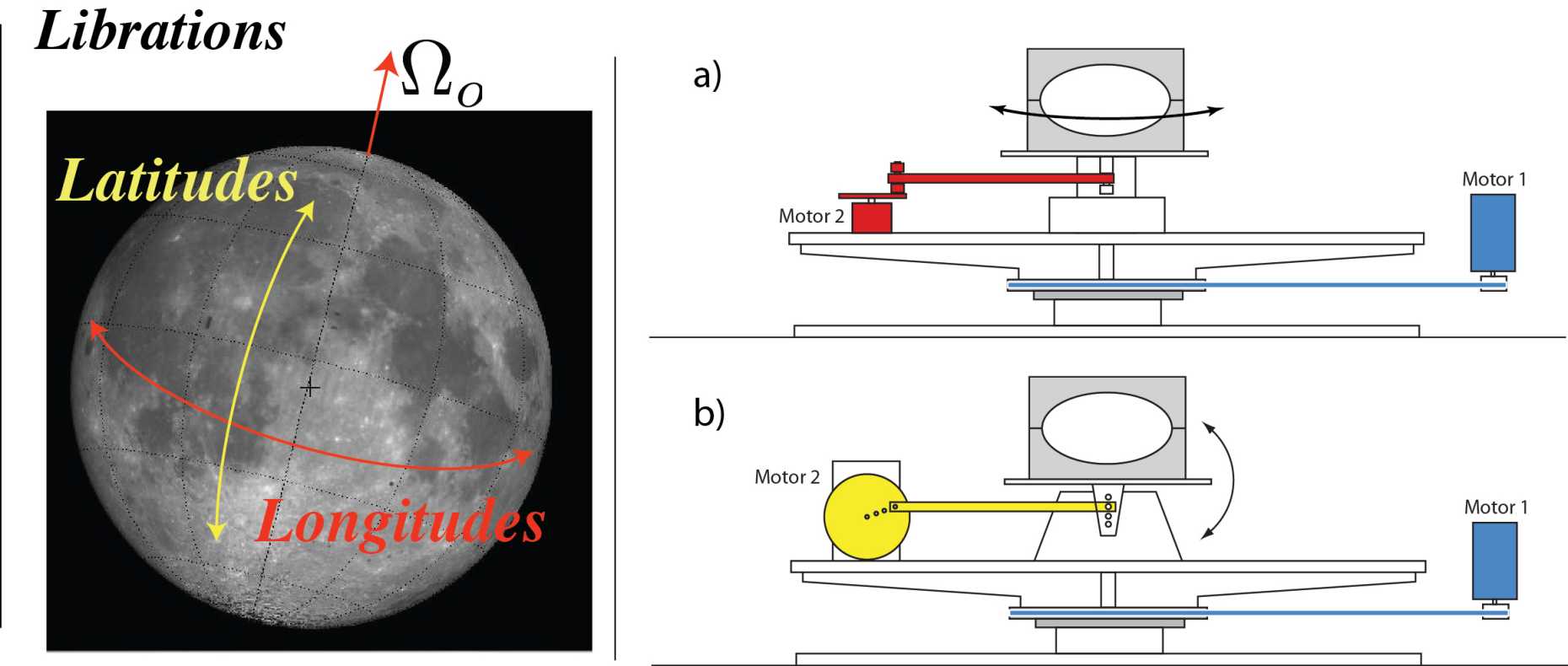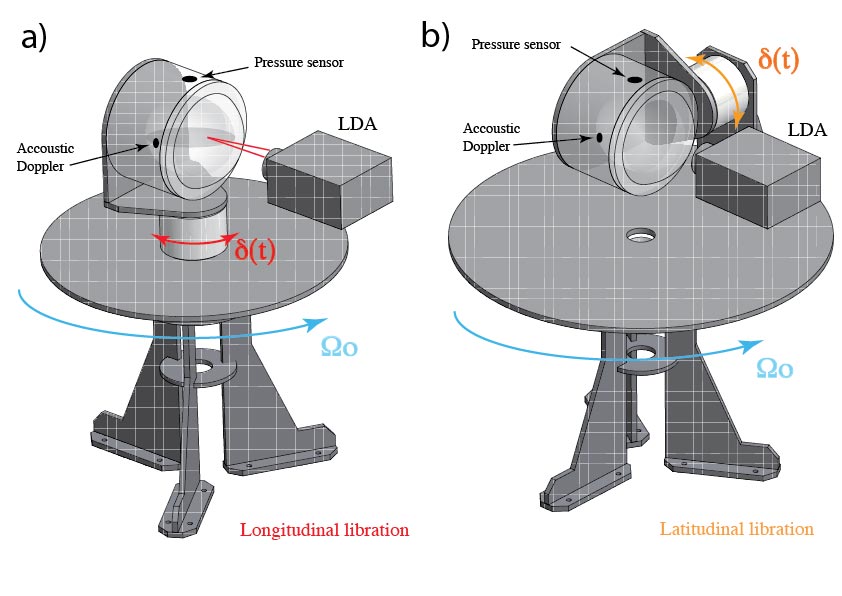Experimental libration
- Introduction and motivations
- The current prototype of latitudinal libration "LIB-1"
- The new libration device "LIB-2"
- The diagnostic systems (coming soon)
Introduction and motivations
Significant resources are presently devoted to the investigation of librating planets such as Europa, Titan, Io, Mercury, Callisto, Ganymede and the Earth’s moon. These efforts, which include space mission and ground based studies, suggest that in some cases the planetary upper solid layers are decoupled from the deep interior by a fluid layer, such as a liquid core on Mercury (Margot et al., 2007) or on the Earth’s moon (Williams et al., 2001) and possibly a subsurface ocean on Titan and Europa (Lorenz et al., 2008; Van Hoolst et al., 2008). Despite the increasing amount of data, the current simple models of cores and subsurface oceans dynamics limit significantly our ability to probe in greater details the interior of the planets from astronomical and magnetic observations. The goal of our research is to shed light on the fluid dynamics driven by longitudinal and latitudinal libration in planetary cores and subsurface oceans.
Planets that are tidally locked with their orbital partner on an elliptical orbit undergo an oscillatory gravitational torque that results in oscillations of their symmetry axes, the so-called forced librations. We commonly decompose librations into longitudinal and latitudinal. A good way to illustrate librations of a planet is to sketch the corresponding laboratory experiment as shown in Figure 1. Using a turntable to mimic the mean rotation of the planet, librational forcing can be simulated with oscillatory motors sitting on the rotating table. Longitudinal libration, a time periodic oscillation of the planet about its mean rotation axis, can be simulated by oscillating the container about the vertical axis (Figure 1a). Latitudinal libration, a time periodic oscillation about an equatorial axis that is fixed in the rotating frame (the turnable), is illustrated in Figure 1b.
People involved: Jerome Noir


